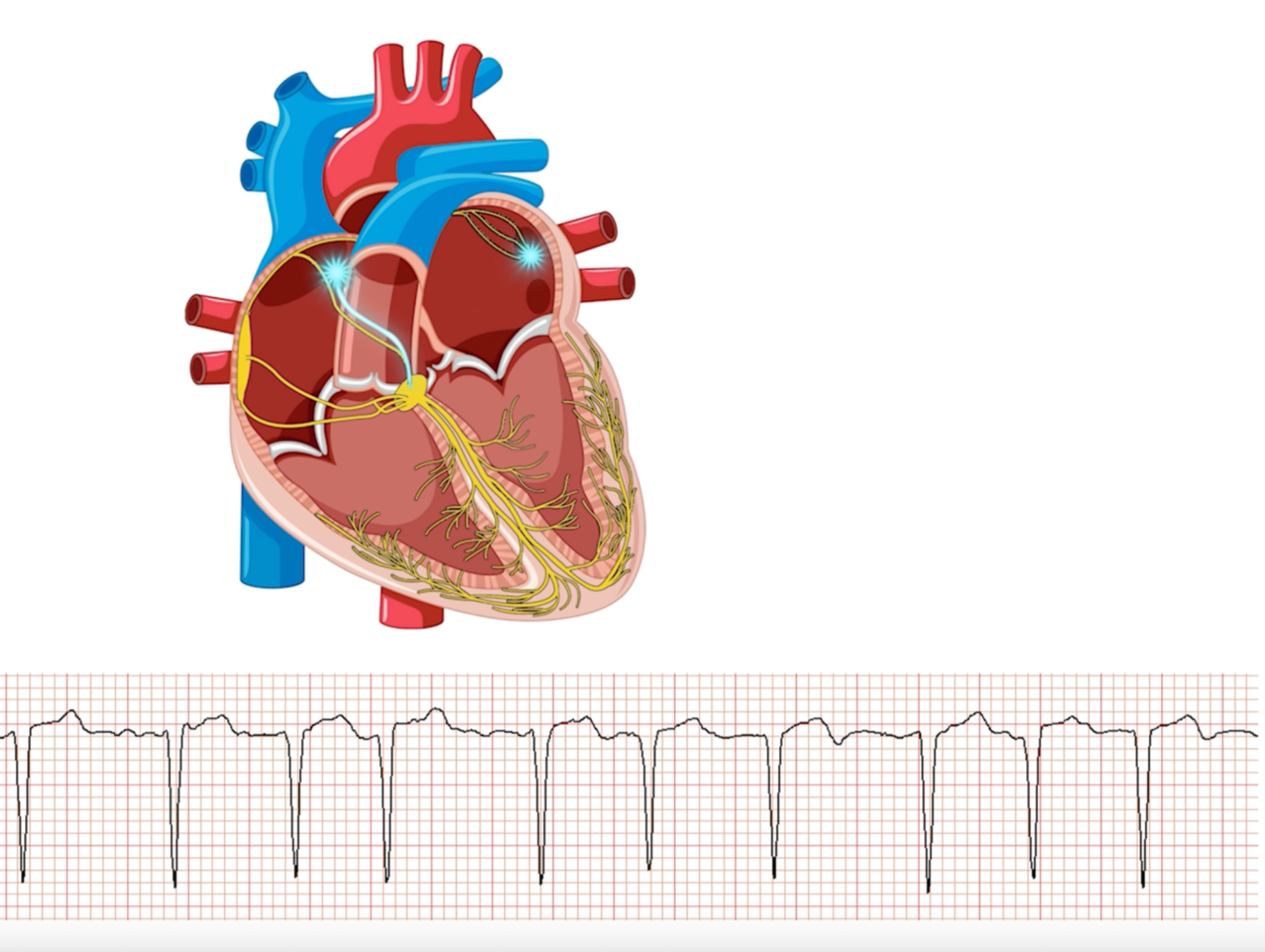Atrial Fibrillation: Why Awareness and Treatment Now Will Save Your Heart and Prevent Strokes

Introduction to Atrial Fibrillation
Atrial fibrillation (AF) is a frequently found heart arrhythmia that has severe implications if left untreated. It raises the chances of stroke and heart failure while decreasing life expectancy. Yet, with diagnosis and treatment of AF in the early stages, many complications which put people at risk can be diminished or avoided.
This article will explain what AF is, how common it is, and why awareness and early detection are crucial. It will also outline modern treatment strategies from medication and lifestyle changes to potentially curative treatments like catheter ablation, and keyhole heart surgery, which when used in the early stages of the condition will allow patients to live long and productive lives free of complications.
What is Atrial Fibrillation?
Atrial fibrillation is an irregular heartbeat, when the atria (the heart’s upper chambers) beat chaotically and out of synchrony and quiver instead of contracting. The pulse is irregular and often a rapid, as a result of disorganised electrical impulses throughout the heart atrial chambers.
When the heart beats out of synchrony, it doesn’t pump blood as effectively. You may feel your heart racing or fluttering, and you may also experience breathlessness, fatigue and dizziness. Some people with AF do not experience any symptoms until a devastating complication like stroke or heart failure occur. Therefore, it’s not uncommon for AF to be discovered during a routine physical or when looking for another condition.
How Common Is Atrial Fibrillation?
AF is the most common type of heart rhythm disturbance. There are more than 1.5 million people diagnosed with AF in the UK alone, with thousands more not knowing they have it. The older you get, the more likely you are to have AF. Young adults tend to have it less frequently, but between age 65 and 75, cases begin to increase and those over 75 experience higher rates of diagnosis, as well. In addition, other comorbidities related to older age increase one’s risk for developing AF, including hypertension, valvular heart disease, obesity and diabetes.
Why Does AF Increase Stroke Risk?
AF is associated with a 500% increase in stroke risk. When the heart does not beat correctly, it does not pump blood; instead, blood sits still in the heart chambers, often in a cul-de-sac called the left atrial appendage. When blood sits still, it can coagulate and create a clot which eventually gets ejected from the heart into the arteries supplying blood to the brain. The thrombus can create an obstruction leading to stroke.
Those with AF are at a significantly higher chance of developing a stroke when compared to those without this arrhythmia. The positive note here is that medical and surgical intervention can reduce this risk. For instance, most individuals with AF will be given a blood thinner prescription to reduce the risk of clot formation in the heart.
AF and Heart Failure
In addition to increasing the likelihood of a stroke and a blood clot, AF can weaken the heart. When the heart beats irregularly and too quickly, the bottom chambers do not get enough time to fill properly between contractions. This means less blood volume is expelled into circulation. Ultimately, this stresses the cardiac tissue over time and leads to heart failure, where the heart can no longer maintain body requirements.
AF and heart failure are inextricably linked. Patients who develop AF go on to develop heart failure, and similarly, patients with heart failure often go on to develop AF. They aggravate each other, leading to an almost guaranteed poor prognosis if AF is left untreated.
Decreased Life Expectancy Associated with Complications of AF
Those who have AF are more prone to having strokes or heart failure incidences which decrease life expectancy in the long run. This does not mean that those who develop AF will have a shorter life span immediately—many people manage their symptoms very well—but it shows how complicated AF can be over time. Managing AF properly, and early in its manifestation can significantly improve long term survival.
Why Diagnosis and Treatment is Important
Diagnosing and treating AF as soon as possible is the best prevention against future complications. Because AF can be asymptomatic, especially in the beginning, it’s vital that pulses are checked regularly, and anyone who thinks their heart is “off” should contact their GP. An irregular pulse might be the first alerting factor.
Your physician can give you a basic ECG (electrocardiogram) test to assess your heart’s electrical impulses. If, after the ECG, AF is detected, treatment can begin immediately, even if you never had symptoms. The sooner AF is diagnosed and treated, the sooner it can be prevented from causing negative effects on the heart.
Common Treatment Options
- Medications: These are drugs that slow heart rates, regulate heart rhythm and cardiac anticoagulation drugs to reduce clotting. Many AF patients are on an anticoagulant like Eliquis or Xarelto and many more are on beta blockers or similar types of drugs to ensure the effectiveness of heartbeats.
- Modifications to daily life: Things that can be done to improve heart function go a long way. Managing blood pressure, eating right, exercising, reducing alcohol and caffeine intake and stopping smoking are paramount.
- Catheter Ablation: Should medications and/or lifestyle changes fail; some patients will eventually be candidates for a procedure known as catheter ablation. Thin wires are threaded through a vein to the heart, where it ablates, or deliberately injures the small areas of tissue that are responsible for creating the AF substrate. For many people, this can decrease the arrhythmia or eliminate it altogether.
- Keyhole Surgical Ablation: Some patients do not respond to catheter ablation or are not suitable. In this case the patient will need to be considered for keyhole heart surgery. This type of procedure is typically warranted when patients need heart procedures in conjunction with their AF treatment or if catheter ablation fails. This procedure consists of small incisions in the chest and may include the closing of the left atrial appendage, which significantly reduces stroke risk and prolongs life. These procedures are successful, especially when completed in the early stages of AF evolution, but once AF becomes permanent medical therapy and stroke avoidance become the only options.
Living Well with AF
Getting diagnosed with AF can be surprising and scary; however, after diagnosis and treatment, many people return to active and normal lives. A key factor in proper management is awareness of one’s diagnosis.
If you’re living with AF or think you have AF and desire more dedicated attention, you can also join our consultation waitlist where you can book to see Mr Birdi, our lead surgeon, or one of his colleagues. The Keyhole Heart Clinic offers you an opportunity for expert opinion and pioneering treatment when you’re ready, just another way to get your questions answered so you feel more comfortable moving forward.
Conclusion
Atrial fibrillation can cause stroke and heart failure, diminished quality of life, and decreased longevity if not treated effectively; however, with effective treatment, many people can avoid the risks associated with AF and ensure they live a healthy life. The key take-away message from this article is that early intervention can save lives. If you have been diagnosed with AF, you should see an expert with a view to AF eradication in its early course.
Should you be diagnosed or start wondering whether your heart beats at the proper rhythm, taking effective steps sooner than later can save you in the long run.
The best medicine is education!
That’s why we created a FREE Video Email Series that teaches you about atrial fibrillation in bite-sized pieces, from symptoms to diagnosis, treatment and lifestyle implications. You can sign up for this free mini-video series by clicking the link below:

